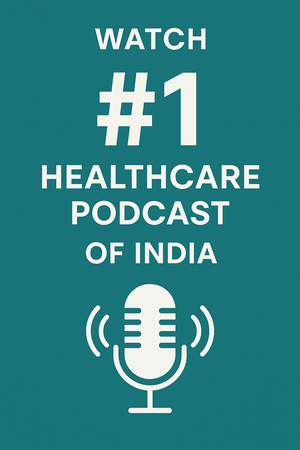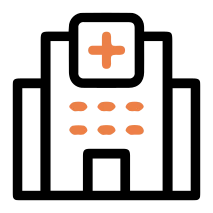Whooping cough, medically known as pertussis, is a highly contagious bacterial infection that primarily affects children. Caused by the bacterium Bordetella pertussis, this condition is characterized by severe coughing fits followed by a high-pitched “whoop” sound when the child tries to inhale. Despite the availability of vaccines, pertussis continues to be a significant health concern in many countries, especially among unvaccinated or partially vaccinated children.
This article will provide a comprehensive understanding of whooping cough in children, including its causes, symptoms, treatment options, preventive measures, and frequently asked questions. With a human-centered approach, we aim to empower parents and caregivers with the knowledge needed to identify and manage this serious respiratory illness.
What is Whooping Cough?
Whooping cough is an acute respiratory disease that affects the lungs and airways. The infection progresses through several stages, beginning with mild cold-like symptoms and eventually leading to severe coughing fits that can last for weeks. It is particularly dangerous in infants and young children, as it can lead to complications such as pneumonia, seizures, and even death.
Children under 12 months are most at risk of serious complications due to their narrow airways and immature immune systems. Early detection and treatment play a vital role in reducing the severity of the disease.
Causes of Whooping Cough
The Culprit: Bordetella Pertussis
The primary cause of whooping cough in children is the bacterium Bordetella pertussis. Once inhaled, the bacteria attach to the cilia lining the upper respiratory tract and release toxins that damage the respiratory epithelium, leading to inflammation and intense coughing.
How It Spreads
Whooping cough spreads through respiratory droplets released when an infected person coughs or sneezes. It is highly contagious and can affect:
- Unvaccinated or under-vaccinated children
- Infants who are too young to be vaccinated
- Adults with waning immunity
The incubation period for pertussis ranges from 7 to 10 days, but symptoms may take up to 3 weeks to appear.
Risk Factors
- Lack of vaccination
- Close contact with infected individuals
- Attending daycare or school
- Family members with mild, undiagnosed symptoms
Symptoms of Whooping Cough in Children
Stage 1: Catarrhal Phase (1–2 weeks)
This early phase resembles a common cold, making it easy to overlook:
- Runny nose
- Mild fever
- Occasional cough
- Sneezing
During this phase, the child is most contagious.
Stage 2: Paroxysmal Phase (1–6 weeks)
This is the hallmark phase where severe coughing spells begin:
- Repetitive coughing fits followed by a “whooping” sound
- Vomiting after coughing
- Exhaustion and difficulty breathing
- Cyanosis (blue tint on lips or face during coughing)
The coughing spells can occur more frequently at night, disrupting sleep.
Stage 3: Convalescent Phase (weeks to months)
In this recovery phase, coughing gradually lessens, but may persist for weeks:
- Less frequent coughing
- Increased energy
- Susceptibility to other respiratory infections
Diagnosis of Whooping Cough
Clinical Evaluation
A doctor may suspect pertussis based on symptom history and vaccination status. Classic signs such as the “whooping” sound and coughing fits guide diagnosis.
Laboratory Tests
- Nasopharyngeal swab: PCR testing or culture to confirm Bordetella pertussis
- Blood tests: May show elevated white blood cell count
Early testing is vital for effective treatment and preventing further spread.
Treatment of Whooping Cough
Antibiotic Therapy
Antibiotics, such as azithromycin, erythromycin, or clarithromycin, are the primary treatment and are most effective during the early stages. While antibiotics may not stop the cough immediately, they reduce transmission.
Supportive Care
For children with whooping cough, managing symptoms is essential:
- Keep the child well-hydrated
- Provide small, frequent meals to prevent vomiting
- Use a humidifier to soothe the airways
- Allow plenty of rest
Hospitalization
Infants under 6 months or children with severe symptoms may require hospitalization. Treatments may include:
- Oxygen therapy
- Intravenous fluids
- Monitoring for apnea and pneumonia
Isolation
To prevent spreading the disease, children with pertussis should be kept home until they have completed at least 5 days of antibiotic treatment.
Prevention of Whooping Cough
Vaccination
The most effective way to prevent whooping cough in children is through vaccination. The DTaP vaccine protects against diphtheria, tetanus, and pertussis:
- DTaP Schedule: Given at 2, 4, 6, 15-18 months, and 4-6 years
- Tdap Booster: For older children, teens, and adults
Cocooning Strategy
This involves vaccinating all close contacts of the newborn, including parents, siblings, and caregivers, to create a protective environment.
Good Hygiene Practices
- Teach children to cover their mouths when coughing
- Regular handwashing
- Avoiding contact with infected individuals
Summary Table: Whooping Cough in Children
| Aspect | Description |
|---|---|
| Cause | Bacterial infection by Bordetella pertussis |
| Spread | Respiratory droplets from coughing or sneezing |
| Key Symptoms | Severe coughing fits, whooping sound, vomiting |
| Stages | Catarrhal, Paroxysmal, Convalescent |
| Diagnosis | Clinical evaluation, PCR, blood tests |
| Treatment | Antibiotics, supportive care, oxygen therapy |
| Prevention | DTaP vaccine, Tdap booster, hygiene |
| Risk Group | Infants <12 months, unvaccinated children |
Frequently Asked Questions
What causes whooping cough in children and how can it be prevented?
Whooping cough is caused by a bacterium called Bordetella pertussis. It spreads through airborne droplets when an infected person coughs or sneezes. It’s especially dangerous for babies who haven’t completed their DTaP vaccination series. The most effective prevention is ensuring your child is vaccinated on time with the full series of DTaP shots. Pregnant mothers can also receive the Tdap booster to pass on some protection to their newborns. Practicing good hygiene and keeping sick children isolated also helps stop the spread.
What are the first signs of whooping cough in a child?
The first signs are often subtle and resemble a common cold: a runny nose, mild fever, sneezing, and a light cough. These symptoms appear during the catarrhal stage, which lasts about one to two weeks. Many parents don’t realize their child has pertussis until the second stage begins, where intense and uncontrollable coughing fits take over. Early recognition and treatment are critical for reducing severity and limiting spread.
How is whooping cough diagnosed in children?
Diagnosis usually involves a combination of clinical history and laboratory testing. Doctors look for tell-tale signs like the classic “whooping” sound, vomiting after coughing, and a history of contact with someone with a persistent cough. A nasopharyngeal swab test (PCR) can detect the bacteria directly. In some cases, a blood test may also be done. If the child has already reached the paroxysmal stage, diagnosis may rely more on symptoms than lab tests.
What is the treatment for whooping cough in babies and young children?
The primary treatment is a course of antibiotics, such as azithromycin, which helps reduce bacterial load and limits spread. Antibiotics are most effective if started in the early catarrhal stage. For babies, especially those under 6 months, hospitalization may be required for oxygen, fluids, and close monitoring. Supportive care like keeping the child hydrated, elevating the head while sleeping, and offering small meals is equally important.
Can whooping cough be life-threatening in children?
Yes, particularly in infants under 12 months, who are more prone to severe complications such as apnea, pneumonia, dehydration, and even death. This is why vaccination and early treatment are crucial. In some severe cases, children may experience seizures or brain damage due to lack of oxygen during coughing fits. Recognizing symptoms early and seeking medical attention can help prevent life-threatening situations.
How long does whooping cough last in children?
Whooping cough can be a prolonged illness. It typically lasts 6 to 10 weeks and follows three stages: catarrhal (1-2 weeks), paroxysmal (1-6 weeks), and convalescent (several weeks to months). Even though the active infection resolves with treatment, the cough may linger for weeks due to airway sensitivity. Patience and supportive care are key during this time.
Can a vaccinated child still get whooping cough?
Yes, while the DTaP vaccine is highly effective, no vaccine provides 100% protection. Immunity can also wane over time. However, vaccinated children who do get pertussis usually experience a much milder form of the disease, with fewer complications and shorter duration. Booster doses in adolescence and adulthood help maintain immunity and protect younger children.
Is whooping cough contagious, and when is a child no longer infectious?
Whooping cough is extremely contagious. A child can spread the infection from the beginning of symptoms (catarrhal stage) up to 3 weeks into the paroxysmal phase. However, they are no longer contagious after completing 5 days of antibiotic treatment. Until then, it’s important to keep the child isolated from others, especially infants and vulnerable people.
What should parents do if their child has been exposed to whooping cough?
If your child has been exposed, consult your pediatrician immediately. If the child is under-vaccinated or has a compromised immune system, prophylactic antibiotics may be recommended to prevent illness. Monitor for early symptoms and avoid public places to prevent potential transmission. Keeping vaccination records up to date is a vital preventive strategy.
How effective is the whooping cough vaccine in children?
The DTaP vaccine is about 80–90% effective in preventing pertussis in children who complete the full 5-dose series. Booster shots (Tdap) help maintain protection as the child grows. Even in cases where vaccinated children contract the disease, symptoms are usually less severe. Immunization also helps protect vulnerable populations by creating herd immunity.
Research Articles on Whooping Cough in Children
| Author Name | Title of Research Article |
|---|---|
| Cherry JD | The Epidemiology of Pertussis: A Comparison of the Epidemiology and Clinical Presentation Before and After the Introduction of the DTaP Vaccine |
| Zhang L | Systematic Review of the Diagnostic Accuracy of Nasopharyngeal Swab Tests for Pertussis |
| Klein NP | Waning Protection After the Fifth Dose of Acellular Pertussis Vaccine |
| Munoz FM | Safety and Immunogenicity of Tdap Vaccine in Pregnant Women |
| Hewlett EL | Mechanisms of Bordetella pertussis Pathogenesis and Host Immune Responses |
| Broder KR | Preventing Pertussis in Infants: The Role of Maternal Immunization |
| Wirsing von Konig CH | Pertussis in Adults: Signs and Prevention |
| Clark TA | Changing Epidemiology of Pertussis: Renewed Focus on Prevention |
| Wendelboe AM | The Burden of Pertussis in Infants and the Potential Impact of Maternal Immunization |
| Lee GM | The Estimated Burden of Pertussis in the United States from 2000 to 2015 |






 and then
and then